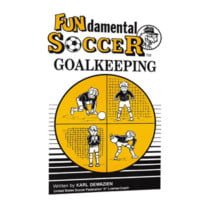5 to 6 - I Know the Rules!
Championing to the Use of a Routine
By Ellen Booth Church
“I can do it, Mrs. Marsh! I’m really good at that!” As Madison returns the books to the shelves after group time, she reminds Jared that he forgot to pick up his floor mat and store it in its proper place.
The span of time between 5 and 6 years of age is an interesting time of social and emotional development.
You may have noticed that many of the young kindergartners entering your program are eager to cooperate and help. They want your approval and like the security of the routines and structure of the classroom and even your authority there. A shift often happens between 5 1/2 and 6, when children start to question and test your authority and the rules. They are not so sure if they want to be “good” all the time! Since most kindergartners come to school at five or younger, you have plenty of time to enjoy this “honeymoon” phase while you work together to build the self-regulation and community skills needed for a harmonious classroom.
Involve Children in Rule Setting
Of course, this is the perfect time to introduce your classroom rules and routines. Children are looking to you for guidance and structure in this new world of kindergarten. As they learn the rules, they develop a sense of autonomy within the safe structure of the classroom. During this phase of their development, 5- and 6-year-olds’ increased language skills support their ability to discuss and collaborate in routine and rule making. The more children participate in the process, the better they understand and follow the rules. This sense of ownership in the process is key to children of this age, who are transitioning from accepting outside authority to challenging it. In fact, the “class-made” rules can be so important to them that they will single out others who are not following them!
Support Positive Behaviors
Five- and 6-year-olds are also developing strong reasoning and thinking skills. These allow them to be able to understand and discuss the reasons (and purpose) for rules and routines. It also allows them to comprehend the cause-and-effect relationship of rules and behavior. This helps them move from acting appropriately because it is what YOU want to them behaving correctly because THEY want to. During this process, children need a great deal of positive reinforcement and support for their demonstration of appropriate behaviors. Since they actually don’t take criticism well, 5- and 6-year-olds tend to react better to positive guidance instead of negative judgment and reprimand.
Welcome Ideas and Insights
We have all heard them comment, “I know!” even before you finish explaining something. This is a precious part of the heart and mind of children of this age. Not only do they want to be “right,” but they also love to demonstrate how they know something-and everything! The “know-it-all” behavior comes partly from an emerging competitive nature that can start now and come into full bloom in the 6-year-old year. But it is largely a demonstration of how children in kindergarten want and need to be “seen” and “heard” in the group. This phase can be delightful or exhausting, depending on how you choose to view and use it. It is helpful to allow time and space in your routine for children to demonstrate their “knowing.” Moving from one activity to another? Invite children to tell you what is happening next! Discussing a problem with classroom noise? Ask them to tell you what the problem is and how to solve it! Children will feel a sense of autonomy and ownership.
Set Clear Expectations
Five- and 6-year-olds respond well to clear expectations-both yours and theirs! Since most children at this stage want to do what is “right,” they feel most comfortable if they know what your expectations are right from the start. If you launch the year by clearly verbalizing and depicting (with picture signs) what you want and need from children, you will probably get it! From the first day of school, express clear expectations for turn-taking, sharing, walking, talking, listening, and sitting. Once you have set these expectations in place, you will only need to remind children of the rules and routines throughout the year.
It is also important to be collaborative with children when setting classroom expectations. As you well know, fives and sixes like to think they are in charge. Ask them what their expectations are for kindergarten. Discuss these and add them to a “great expectations” chart.
Keep in mind that this delicate time of the year is different for each child. While the information here is based on developmental milestones, not all children will behave similarly in the same situation. Keep in mind these developmental characteristics while responding to the individual needs of children.
What You Can Do
- Set clear expectations and invite children to express theirs.
- Provide a strong, flexible routine that is responsive to the ever-changing needs of the group.
- Encourage collaboration in a rule setting.
- Use positive reinforcement and guidance.








